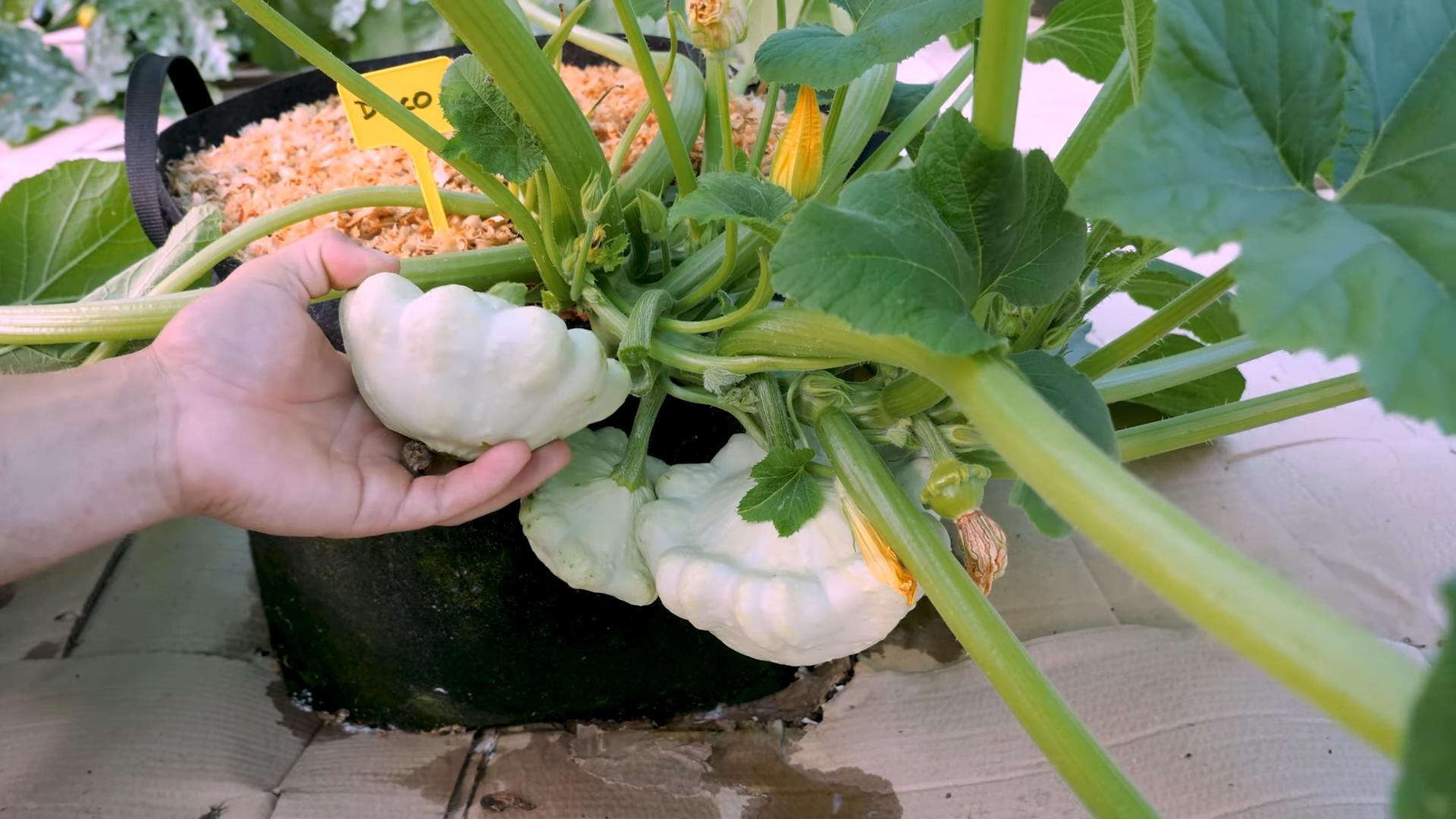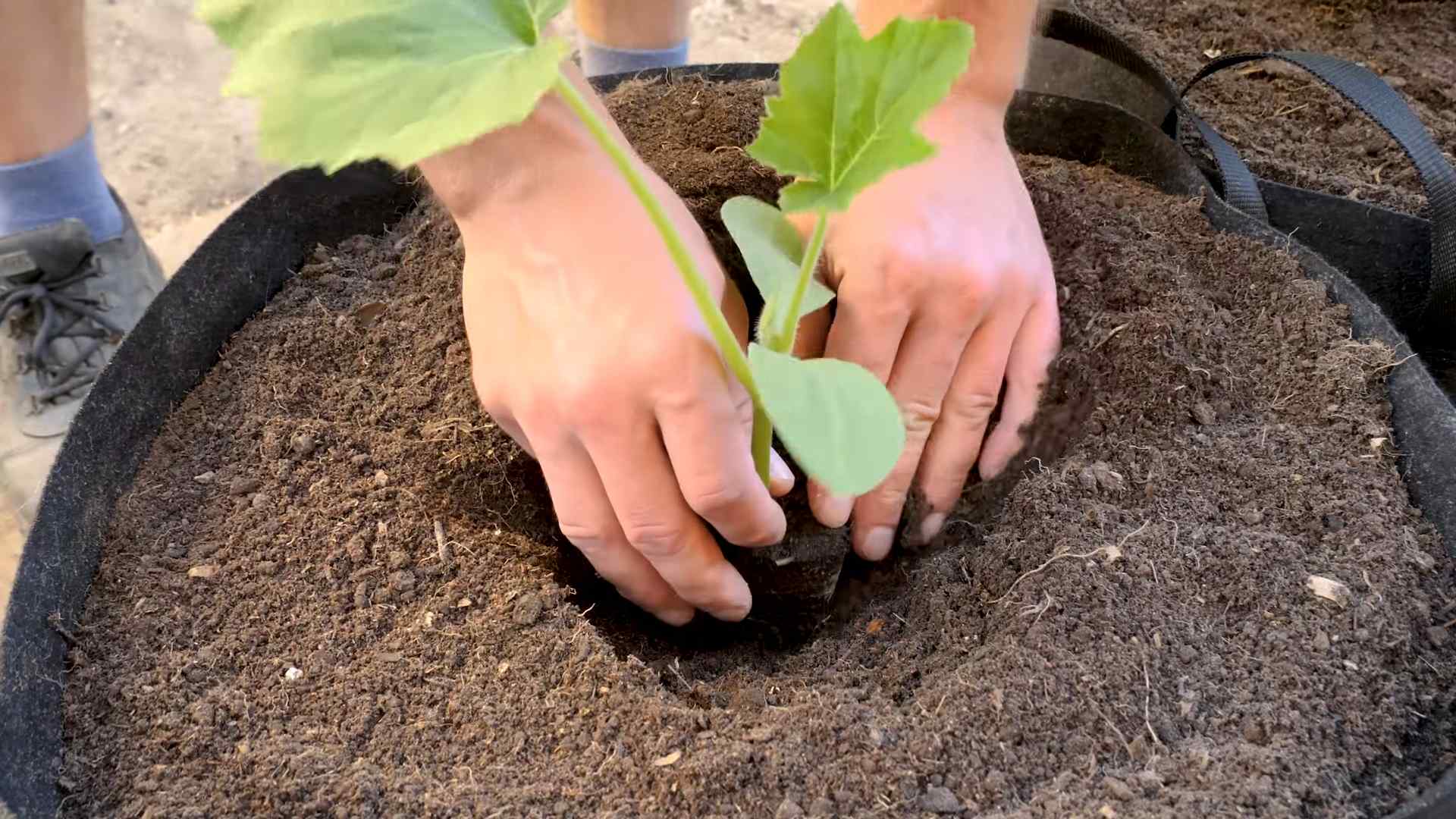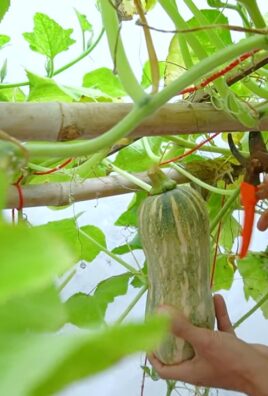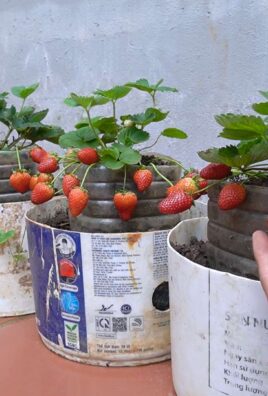Grow Romanesco Cauliflower: Ever dreamt of cultivating your own mesmerizing, fractal-patterned vegetable? I know I have! This isn’t just about growing food; it’s about creating edible art right in your backyard. For centuries, Romanesco cauliflower, with its unique geometric beauty, has captivated gardeners and chefs alike. Originating in Italy, this vibrant vegetable is more than just a pretty face; it’s packed with nutrients and boasts a delicious, nutty flavor.
But let’s be honest, sometimes the idea of growing something so unique can feel a little daunting. That’s where these DIY tricks and hacks come in! I’m here to demystify the process and show you that you absolutely can grow Romanesco Cauliflower successfully, even if you’re a beginner gardener. We’ll cover everything from seed starting to pest control, ensuring you have a bountiful harvest of these stunning vegetables. So, ditch the grocery store and let’s get our hands dirty! I’m excited to share my favorite tips and tricks for a thriving Romanesco cauliflower garden.

Growing Romanesco Cauliflower: A Step-by-Step Guide to Fractal Fun!
Okay, friends, let’s talk about Romanesco cauliflower. It’s not just a vegetable; it’s a work of art! That mesmerizing fractal pattern? Totally edible and surprisingly easy to grow yourself. I’m going to walk you through everything you need to know, from seed to harvest, so you can impress your friends (and your taste buds) with this unique veggie.
Choosing the Right Romanesco Variety
First things first, you need to pick your Romanesco variety. While there aren’t a ton of different cultivars, you’ll want to make sure you’re getting seeds specifically for Romanesco. Some common and reliable varieties include:
* ‘Natalino’: This is a popular choice, known for its good flavor and relatively early maturity.
* ‘Veronica’: Another solid option, producing beautiful, tightly packed heads.
* ‘Romanesco Italia: A classic variety, reliable and produces good sized heads.
I usually go with ‘Natalino’ because I’m impatient and love the slightly nutty flavor. But honestly, any of these will give you fantastic results.
Starting Your Romanesco Seeds
Romanesco, like other brassicas, prefers cooler weather. So, timing is key! I usually start my seeds indoors about 4-6 weeks before the last expected frost in spring, or about 10-12 weeks before the first expected frost in fall. This gives them a head start and protects them from extreme temperatures.
Here’s how I do it:
1. Gather Your Supplies: You’ll need seed starting trays or small pots, seed starting mix (I like a mix of peat moss, vermiculite, and perlite), a spray bottle, and your Romanesco seeds.
2. Prepare the Seed Starting Mix: Moisten the seed starting mix with water until it’s damp but not soggy. You want it to hold together when you squeeze it, but not drip water.
3. Sow the Seeds: Fill your seed starting trays or pots with the moistened mix. Make a small indentation (about ¼ inch deep) in the center of each cell or pot. Place one or two seeds in each indentation and gently cover them with the mix.
4. Water Gently: Use a spray bottle to lightly water the surface of the mix. Avoid overwatering, which can lead to damping off (a fungal disease that kills seedlings).
5. Provide Warmth and Light: Romanesco seeds need warmth to germinate. I usually place my seed starting trays on a heat mat, which keeps the soil temperature around 70-75°F (21-24°C). You’ll also need to provide plenty of light. If you don’t have a sunny windowsill, use grow lights. I keep my grow lights on for about 14-16 hours a day.
6. Monitor and Water: Keep the seed starting mix consistently moist, but not soggy. Check the trays daily and water as needed. You should see seedlings emerge in about 5-10 days.
7. Thin Seedlings: Once the seedlings have their first true leaves (the second set of leaves that appear after the initial seed leaves), thin them to one seedling per cell or pot. Choose the strongest, healthiest-looking seedling and snip off the others at the soil line. Don’t pull them out, as this can disturb the roots of the remaining seedling.
Preparing the Garden Bed
While your seedlings are growing indoors, it’s time to get your garden bed ready. Romanesco needs rich, well-drained soil and plenty of sunlight (at least 6 hours a day).
1. Choose a Sunny Location: Select a spot in your garden that gets at least 6 hours of direct sunlight each day.
2. Amend the Soil: Romanesco is a heavy feeder, so it needs nutrient-rich soil. I like to amend my soil with plenty of compost and well-rotted manure. Dig in about 2-3 inches of compost and manure into the top 12 inches of soil.
3. Check the Soil pH: Romanesco prefers a soil pH between 6.0 and 7.0. You can test your soil pH with a soil testing kit, which you can find at most garden centers. If your soil is too acidic (pH below 6.0), add lime to raise the pH. If it’s too alkaline (pH above 7.0), add sulfur to lower the pH.
4. Ensure Good Drainage: Romanesco doesn’t like to sit in soggy soil. If your soil is heavy clay, amend it with sand or other drainage-improving materials. You can also create raised beds to improve drainage.
Transplanting Your Romanesco Seedlings
Once your seedlings have several sets of true leaves and are about 4-6 inches tall, they’re ready to be transplanted into the garden.
1. Harden Off the Seedlings: Before transplanting, you need to harden off the seedlings. This means gradually exposing them to outdoor conditions over a period of about a week. Start by placing the seedlings outdoors in a sheltered location for an hour or two each day, gradually increasing the amount of time they spend outdoors. This will help them acclimate to the sun, wind, and temperature changes.
2. Choose a Cloudy Day: Transplanting on a cloudy day will help reduce stress on the seedlings.
3. Dig Holes: Dig holes in your prepared garden bed, spacing them about 18-24 inches apart. The holes should be deep enough to accommodate the root balls of the seedlings.
4. Carefully Remove Seedlings: Gently remove the seedlings from their pots or trays. Be careful not to damage the roots.
5. Plant the Seedlings: Place the seedlings in the holes and backfill with soil. Gently firm the soil around the base of the plants.
6. Water Thoroughly: Water the seedlings thoroughly after transplanting.
7. Mulch: Apply a layer of mulch around the plants to help retain moisture, suppress weeds, and regulate soil temperature. I like to use straw or shredded leaves.
Caring for Your Romanesco Plants
Now that your Romanesco plants are in the ground, it’s time to provide them with the care they need to thrive.
1. Water Regularly: Romanesco needs consistent moisture, especially during hot, dry weather. Water deeply whenever the top inch of soil feels dry. Avoid overhead watering, which can lead to fungal diseases. I prefer to use a soaker hose or drip irrigation.
2. Fertilize: Romanesco is a heavy feeder, so it needs regular fertilization. I like to use a balanced organic fertilizer, such as fish emulsion or compost tea. Apply fertilizer every 2-3 weeks, following the instructions on the fertilizer package.
3. Weed Regularly: Keep the garden bed free of weeds, which can compete with the Romanesco plants for nutrients and water. Hand-pull weeds regularly or use a hoe to cultivate the soil.
4. Protect from Pests: Romanesco is susceptible to several pests, including cabbage worms, aphids, and flea beetles. Inspect your plants regularly for signs of pests and take action if necessary. I like to use organic pest control methods, such as insecticidal soap or neem oil. You can also cover your plants with row covers to prevent pests from reaching them.
5. Watch for Diseases: Romanesco can also be affected by fungal diseases, such as black rot and clubroot. To prevent these diseases, practice good garden hygiene, such as removing diseased plant debris and avoiding overhead watering. If you notice signs of disease, treat the plants with a fungicide.
Harvesting Your Romanesco
The moment you’ve been waiting for! Harvesting your beautiful Romanesco.
1. Timing is Key: Romanesco is ready to harvest when the head is firm, compact, and about 6-8 inches in diameter. The exact timing will depend on the variety and growing conditions, but it usually takes about 75-100 days from transplanting.
2. Check the Head: Gently squeeze the head to check for firmness. It should feel solid and dense.
3. Cut the Head: Use a sharp knife to cut the head from the plant, leaving a few inches of stem attached.
4. Store Properly: Store the harvested Romanesco in the refrigerator for up to a week. To keep it fresh, wrap it in a damp paper towel and place it in a plastic bag.
Troubleshooting Common Problems
Even with the best care, you might encounter some problems while growing Romanesco. Here are a few common issues and how to address them:
* Buttoning: This is when the head forms prematurely and remains small. It’s often caused by stress, such as lack of water or nutrients. Make sure your plants are getting enough water and fertilizer.
* Bolting: This is when the plant starts to flower prematurely. It’s usually caused by hot weather. Plant your Romanesco at the right time of year to avoid bol

Conclusion
So, there you have it! Growing Romanesco cauliflower at home might seem like a challenge, but with the right approach and a little patience, you can cultivate these stunning, fractal vegetables right in your own backyard. This DIY trick isn’t just about saving money; it’s about connecting with your food, understanding the growing process, and experiencing the unparalleled satisfaction of harvesting something you nurtured from seed to table.
Why is this a must-try? Because store-bought Romanesco simply can’t compare to the vibrant flavor and freshness of homegrown. Plus, the sheer novelty of growing such a unique and visually striking vegetable is a conversation starter and a source of pride. Imagine serving a dish featuring your own Romanesco cauliflower – your guests will be amazed!
Beyond the basic method outlined, there’s plenty of room for experimentation. Try different companion planting strategies to deter pests naturally. Marigolds, for example, are known to repel nematodes and other unwanted visitors. You could also explore different soil amendments to tailor the nutrient profile to your Romanesco’s specific needs. Some gardeners swear by adding bone meal to the soil to encourage strong root development and healthy head formation.
Consider starting your seeds indoors earlier in the season if you live in a region with a shorter growing season. This will give your Romanesco plants a head start and increase your chances of a successful harvest. Alternatively, if you live in a warmer climate, you might be able to grow Romanesco as a fall or winter crop.
Don’t be discouraged if your first attempt isn’t perfect. Gardening is a learning process, and every season brings new challenges and opportunities. The key is to observe your plants closely, adjust your approach as needed, and never give up on the joy of growing your own food.
We wholeheartedly encourage you to give this DIY trick a try. Embrace the challenge, celebrate the small victories, and savor the delicious rewards. And most importantly, share your experience with us! We’d love to hear about your successes, your struggles, and any tips or tricks you discover along the way. Post pictures of your Romanesco cauliflower on social media and tag us – we can’t wait to see what you create! Growing Romanesco cauliflower is a rewarding experience that connects you to nature and provides a unique and delicious addition to your meals.
Frequently Asked Questions (FAQ)
Q: How long does it take to grow Romanesco cauliflower?
A: Romanesco cauliflower typically takes between 75 and 100 days to mature from seed. This timeframe can vary depending on your climate, soil conditions, and the specific variety you’re growing. Starting seeds indoors can shorten the overall growing time, especially in regions with shorter growing seasons. Keep a close eye on your plants and harvest when the head is firm and the florets are tightly packed.
Q: What are the best growing conditions for Romanesco cauliflower?
A: Romanesco cauliflower thrives in full sun, requiring at least six hours of direct sunlight per day. It prefers well-drained soil that is rich in organic matter. The ideal soil pH is between 6.0 and 7.0. Consistent watering is crucial, especially during head formation. Avoid overhead watering, as this can increase the risk of fungal diseases. Consider using a soaker hose or drip irrigation system to deliver water directly to the roots.
Q: What are some common pests and diseases that affect Romanesco cauliflower?
A: Romanesco cauliflower is susceptible to many of the same pests and diseases that affect other brassicas, such as cabbage worms, aphids, flea beetles, and clubroot. Regularly inspect your plants for signs of infestation or disease. Use row covers to protect young plants from pests. Handpick cabbage worms and other pests as needed. Treat fungal diseases with appropriate fungicides. Crop rotation and good sanitation practices can also help prevent pest and disease problems.
Q: How often should I water my Romanesco cauliflower plants?
A: Water your Romanesco cauliflower plants deeply and regularly, especially during dry periods. Aim to keep the soil consistently moist but not waterlogged. The frequency of watering will depend on your climate, soil type, and the size of your plants. Check the soil moisture regularly and water when the top inch feels dry to the touch. Mulching around the plants can help retain moisture and suppress weeds.
Q: What kind of fertilizer should I use for Romanesco cauliflower?
A: Romanesco cauliflower benefits from regular fertilization, especially during the early stages of growth and head formation. Use a balanced fertilizer that is rich in nitrogen, phosphorus, and potassium. You can also amend the soil with compost or other organic matter to provide a slow-release source of nutrients. Avoid over-fertilizing, as this can lead to excessive vegetative growth and reduced head formation. Follow the instructions on the fertilizer label carefully.
Q: Can I grow Romanesco cauliflower in containers?
A: Yes, you can grow Romanesco cauliflower in containers, but you’ll need to choose a large container that is at least 12 inches in diameter and 12 inches deep. Use a high-quality potting mix that is well-draining and rich in organic matter. Container-grown plants will require more frequent watering and fertilization than plants grown in the ground. Make sure the container has drainage holes to prevent waterlogging.
Q: How do I know when my Romanesco cauliflower is ready to harvest?
A: Romanesco cauliflower is ready to harvest when the head is firm, compact, and the florets are tightly packed. The head should be about 6-8 inches in diameter. Use a sharp knife to cut the head from the plant, leaving a few leaves attached. Harvest in the morning when the plant is cool and hydrated.
Q: My Romanesco cauliflower head is loose and not tightly packed. What could be the problem?
A: A loose or poorly formed Romanesco cauliflower head can be caused by several factors, including insufficient sunlight, inconsistent watering, nutrient deficiencies, or high temperatures. Ensure your plants are getting at least six hours of direct sunlight per day. Water regularly and deeply, especially during dry periods. Fertilize with a balanced fertilizer to provide essential nutrients. Protect plants from extreme heat by providing shade during the hottest part of the day.
Q: Can I save seeds from my Romanesco cauliflower plants?
A: Saving seeds from Romanesco cauliflower can be challenging, as it is a biennial plant, meaning it takes two years to produce seeds. You’ll need to overwinter the plants and allow them to flower and produce seeds in the second year. Cross-pollination can also be a concern, so you’ll need to isolate your Romanesco plants from other brassicas to ensure true-to-type seeds. If you’re new to seed saving, it’s best to start with easier-to-save vegetables.





Leave a Comment